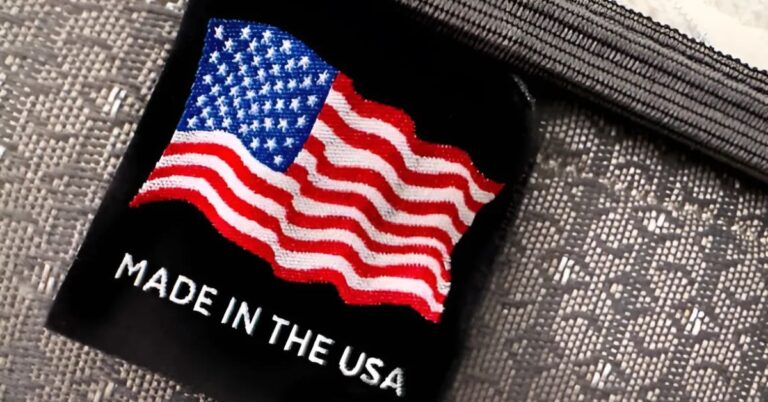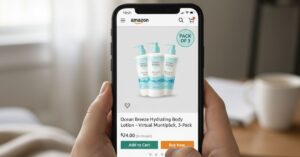
As scrutiny intensifies, sellers listing products with made in USA claims on Amazon must ensure every component and process aligns with FTC rules.
American consumers are actively seeking out products made in the USA, and data shows they are willing to pay a premium for them. For instance, a Reshoring Institute survey found that 83% of shoppers would pay up to 20% more for American-made goods, creating a powerful incentive for sellers to label their products accordingly.
However, making this claim casually can now put your entire business at risk. The Federal Trade Commission (FTC) has intensified its enforcement, sending warning letters not just to individual companies but to major marketplaces like Amazon and Walmart, holding them accountable for third-party seller claims. This new level of scrutiny means your listings are being watched more closely than ever before.
To safely meet consumer demand without facing steep fines or legal action, sellers must understand the strict rules. This article examines the FTC’s recent actions and outlines what you need to do to ensure your Made in USA claims are compliant.
FTC Designates July as Made in USA Month
US Department of Commerce"Estimates suggest that U.S. manufacturers produce only about 11% of the goods Americans buy."
From the Federal Trade Commission, a new initiative highlights the importance of U.S.-based manufacturing and transparent advertising. The agency has officially proclaimed July 2025 as “Made in the USA” Month.
Federal Trade Commission Chairman Andrew N. Ferguson stated that this effort honors the nation’s independence while reinforcing the agency’s role in law enforcement. Its purpose is to prevent false or unsubstantiated “Made in the USA” claims.
This move aims to protect Americans from deceptive advertising and build consumer confidence. It assures shoppers that their purchases genuinely support American workers, manufacturers, and local communities.
The designation is supported by recent polling data showing that 61% of Americans consider a product’s U.S. origin during their purchasing decisions. Many consumers believe American-made goods are of higher quality and better for the environment.
The FTC also seeks to help businesses that can rightfully make the claim but currently do not. The agency has created an easy-to-read online guide to help companies advertise their products correctly.
According to the Chairman, the goals of this initiative are to:
- Enforce laws that prohibit false advertising.
- Help consumers confidently support the U.S. economy.
- Encourage eligible companies to promote their American-made products.
- Showcase American manufacturing as a source of innovation and job growth.
FTC Puts Marketplaces on Notice Over Seller Claims
According to the National Law Review, the FTC followed its July 2025 “Made in the USA” Month announcement by issuing warning letters to four companies, including Amazon and Walmart. The letters addressed concerns over allegedly deceptive origin claims made by third-party sellers on their platforms.
The FTC expects large online marketplaces to actively monitor and enforce compliance with the Made in USA Labeling Rule. This includes identifying false claims and taking corrective actions when sellers violate product origin requirements.
The 2021 MUSA Labeling Rule outlines strict criteria for when a product can legally be labeled as “Made in USA.” Sellers must be able to show:
- Final assembly or processing takes place in the United States
- All significant processing is completed in the United States
- All or nearly all ingredients or components are U.S.-sourced
If a product does not meet all three standards, the claim must be clearly qualified. Misleading or overstated claims can trigger FTC enforcement under Section 5(a) of the FTC Act, carrying steep civil penalties.
A notable example is the $3.17 million penalty issued to Williams-Sonoma in 2024 for violating a prior FTC order related to unsubstantiated MUSA claims. This case remains the highest financial penalty ever imposed for violations under the labeling rule.
The FTC’s action coincides with a rise in MUSA-related class action lawsuits. The Wall Street Journal reports that 13 cases were filed in the first half of 2025, nearly double the total filed in all of 2024.
In addition to federal enforcement, competitors are increasingly challenging MUSA claims through the National Advertising Division of the Better Business Bureau. These disputes reflect growing pressure across the market to ensure honest labeling, especially as tariffs and shifting supply chains increase consumer focus on product origin.
Advertisers are advised to carefully review product labels and marketing content related to U.S. origin. Even when compliant today, claims should be reevaluated if sourcing or production methods change.
Understanding and Meeting FTC's Made in USA Standard
FTC has long enforced rules that prohibit deceptive origin claims and clarified the criteria for labeling products as “Made in USA.” According to the FTC, unqualified claims must meet the strict “all or virtually all” standard, which requires domestic sourcing and processing at nearly every level.
The Made in USA Labeling Rule, finalized in 2021, codifies this standard and applies not just to physical labels but also to claims made in catalogs, online listings, email promotions, and social media ads. Violations of this rule can lead to steep civil penalties, a risk that any competent Amazon agency helps its clients navigate.
For a product to qualify for an unqualified “Made in USA” claim, it must:
- Undergo final assembly or processing in the United States
- Include only negligible foreign content, if any
- Have all significant manufacturing processes and components sourced from the U.S.
The FTC evaluates these claims based on cost contribution, how essential foreign parts are to function, and how far removed those parts are from the final product. If any part or step in the process is significantly foreign, a broad “Made in USA” label is likely deceptive.
Qualified claims, such as “Made in USA of U.S. and imported parts,” are permitted when full domestic content can’t be substantiated. However, companies must use caution to ensure these claims are still accurate and not misleading.
Examples of appropriate qualified claims include:
- “Assembled in USA from Imported Parts”
- “60% U.S. Content”
- “Packaging Made in USA”
The FTC also enforces rules around comparative and implied origin claims. Even slogans, images like flags, or vague phrases like “Created in USA” can be considered misleading if they imply full domestic origin without proper backing.
Additionally, the FTC’s jurisdiction overlaps with Customs and Border Protection (CBP), which governs imported goods’ physical markings. A product may be marked “Made in [Foreign Country]” by CBP but still trigger FTC scrutiny if advertised with U.S.-origin implications.
Notably, the FTC does not pre-approve “Made in USA” claims. Businesses are responsible for having reliable substantiation before making any origin-related marketing statements.
According to the FTC, ongoing monitoring is critical. If sourcing or manufacturing practices change, sellers must update their marketing to reflect those shifts or risk enforcement actions.
Brands that rely on third-party suppliers must secure documentation confirming the U.S. content of inputs rather than assuming compliance. For example, a U.S.-assembled product with a motor made from imported components might still fall short of the threshold.
The FTC also advises caution when referencing brand names, locations, or general “American quality” themes. These may carry an implied origin claim depending on context and could be viewed as deceptive under the law.
National Institute of Standards and Technology"There's a growing movement to bring manufacturing back to the U.S., creating more resilient domestic supply chains."






